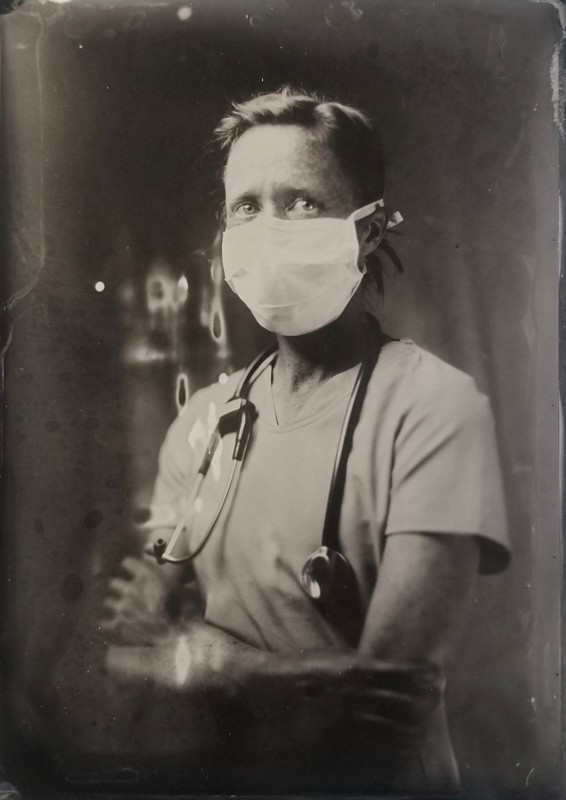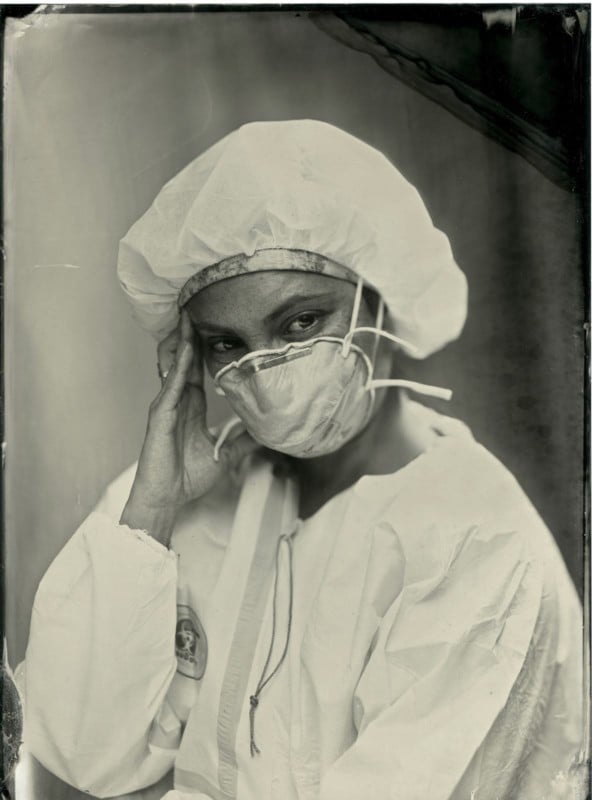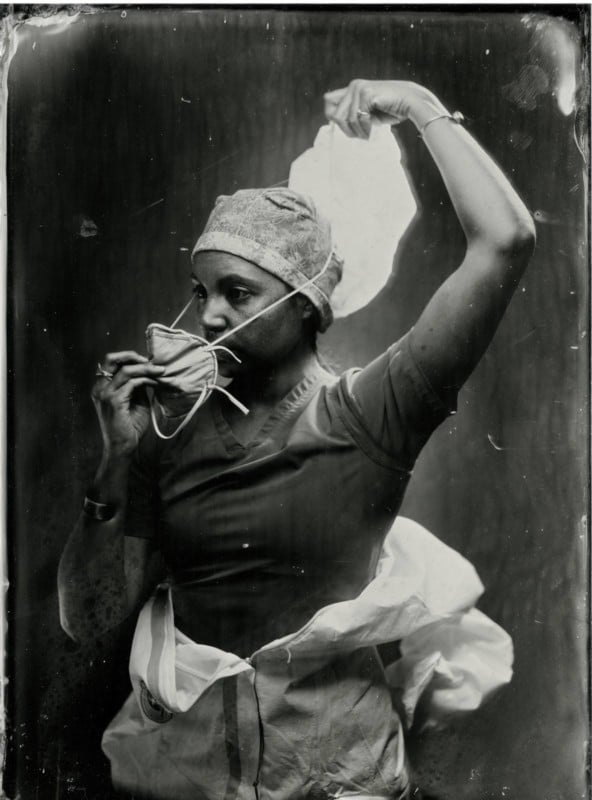Wet Plate Collodion Portraits of Frontline Medical Workers
![]()
It hasn’t been easy being a portrait photographer during a pandemic. I opened my tintype portrait studio in February of 2020 with visions of goofy vintage photo remakes and smiling families gracing my lens. By the end of March, it was only still lifes full of skulls and dead flowers, dark and stale tones oddly appropriate for the time.
The portraits I took that day shocked us for their honesty of the moment. A hesitant determination in the eyes. A strength and grit to the pose. The chemicals and my technique were off that day but it only added to a look from a different time, a different world. And we were living in it.

After that session, I continued to hear terrifying stories from close friends in the medical field–flight nurses and ICU doctors, paramedics and firefighters–each telling stories that weren’t broadcast by any media outlets. They were accounts lost to censorship, only to be found in the cruel memories from the few people in the hospital room, the nurses, doctors, and clean-up crew.
In an attempt to make sense of it all, I took to the ancient craft of the wet plate collodion process and my 5×7 Kodak 2D. Part photographer, part rapt listener, I made more than 120 tintypes in seven weeks. The culmination of a series I have since titled “Resilience”. A fitting name, I hope, for a group of people choosing to risk their own lives to help others if at times only to facilitate a more peaceful departure.

Nine months have passed since I created these tintypes and the faces speak louder now than ever before. They have to. With news of vaccines on the horizon, hope is certainly here but our collective patience is running thin. While fatigue has set in for the public, it is the medical worker’s fatigue that we should remain concerned about.
Catching up with one of the faces of “Resilience,” ICU RN Melissa Rodriguez said:
We have risen to the challenge, but it has shown significant flaws in the healthcare system and it is the healthcare workers that are suffering in that process. Some days we come in anxious, stressed, and work so hard. Every day for the last three months somebody mentions getting help, some sort of counseling, and even harming themselves. Lots of staff have quit our unit. I don’t know anyone that hasn’t thought about leaving. Everybody has cried with a patient, cried at home and there is worry for this winter.
Melissa, who has lasting symptoms from her own battle with COVID-19, recently enrolled in school for counseling for this upcoming year. She says there are good days too when everyone is working together, supporting each other. But the difference this year is before going into work she has to mentally prepare, find a good head space just to survive. “Otherwise it will crush you”

A lot has changed since March of 2020. Treatment of the virus has drastically improved. We know how to protect ourselves. The long road of resilience, however, has not been without some major bumps in the road. For medical and first responder staff, the suffocating PPE will continue to be a reality, as they don face shields, masks, and hazmat suits daily to adhere to strict protocols and measures taken for the best care possible.
This photo series reminds us that progress in fighting this disease is not carried on the backs of bureaucrats but rests instead on the strength and courage of the individuals on the front lines of this pandemic. “Resilience” is a reminder that they have been giving their best effort for nine months straight now, so perhaps we owe them ours as well.
You can see the entire “Resilience” series on my website and Instagram.
About the author: Eric Retterbush is a beauty hunter. The opinions expressed in this article are solely those of the author. Retterbush loves creating and exploring with the visual arts in many mediums and most recently began creating tintypes using the wet plate collodion process. Since beginning this intriguing adventure, Eric has learned how to understand light, chemistry, and the subjects he photographs. Every aspect of the process brings enlightenment and joy to Eric and he is often found tinkering with the technical aspects of the art form and begging people to sit for just one more frame. He currently resides in the high desert of Flagstaff, Arizona. You can find more of his work on his website and Instagram.